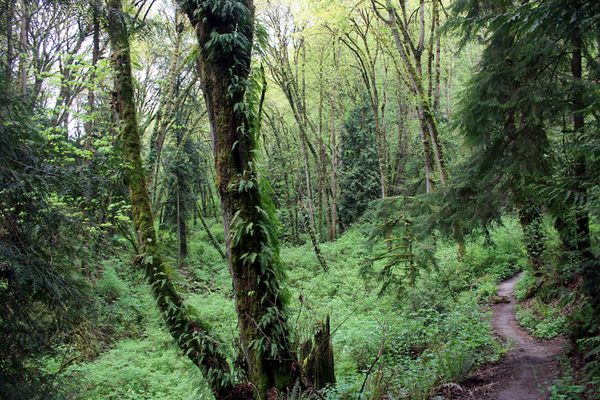Lake Washington occupies a north-south trending glacial basin just east of Seattle, and so tends to isolate the city. For this reason much of the shoreline along the east side remained undeveloped until well into the 20th century. “Eastside” development didn’t really take off until the floating bridges, the I-90 bridge to the south and the Evergreen Point bridge to the north, were built across the lake in the mid-20th century.
In 1926, long before the bridges, Bishop Edward John O’Dea purchased 366 acres on the northeast side of Lake Washington as a site for a seminary. Bishop O’Dea delivered the blessing of the cornerstone of St. Edward’s Seminary on October 13, 1930, and the seminary was dedicated exactly a year later. St. Edward’s enrollment grew through the early 1950s, but the changing priorities of the Catholic Church in the 1960s led to decreases in enrollment. St. Edward became a minor (i.e., high-school) seminary in 1968. Finally, in 1977 St. Edward and 316 acres of the site were sold to the state of Washington to be the basis of a state park, which was created in 1978.
St. Edward State Park now preserves an almost unique snapshot of the undeveloped shoreline of Lake Washington. The park grounds are seamed with trails, some of which provide lakeshore access. The area is also, as might be expected, a haven for wildlife. There are also still interpretive signs on the seminary and students’ life there.
In an incongruous development, the old seminary has been remodeled into a high-end hotel in the last few years. Efforts were made to preserve as much of the structure as possible and have been largely successful. The common areas of the hotel, which include restaurants and a bar, are accessible to the public, and views can be had out some of the upper windows that open onto the public hallways. The first-floor hallways also hold art galleries, with some pieces for sale.

